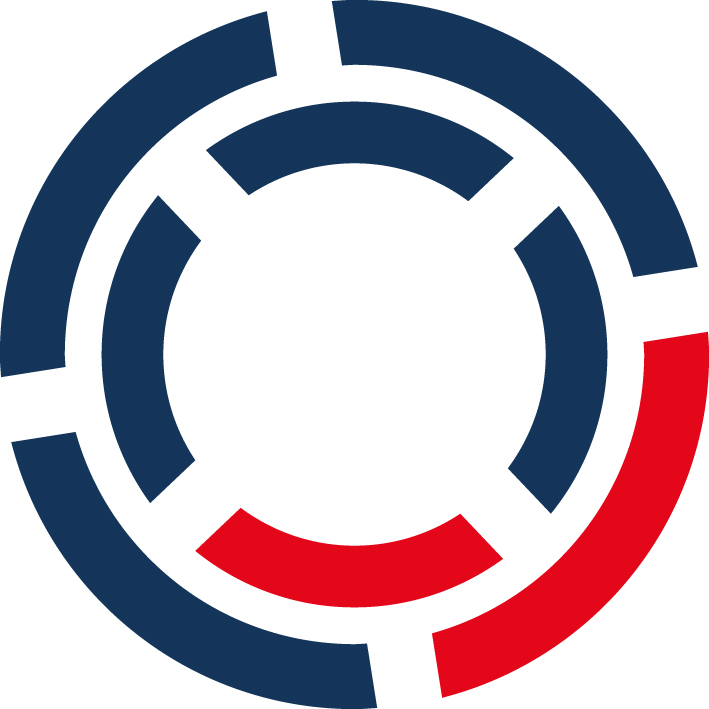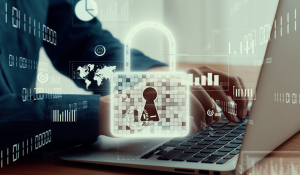Access management: a key to IT security in your company
Companies are faced with the constant task of protecting their digital assets. This is particularly essential in healthcare, where patient data must...
7 min read
 DriveLock
Jul 16, 2025 10:00:00 AM
DriveLock
Jul 16, 2025 10:00:00 AM

Managing user identities and access rights is one of the biggest challenges facing organizations. With ever-increasing cyber threats and the need to protect sensitive data and critical systems, this is a top priority across all industries - be it healthcare, manufacturing or critical infrastructure. This is where Identity Governance and Administration (IGA) comes into play. It is a key concept that is of great importance to both experienced IT professionals and those dealing with IT security issues for the first time.
IGA allows you to keep track of who has access to which company resources and why. At its core, it is about ensuring that the right people - or systems - have access to the right information and applications at the right time and with the right permissions. It combines the strategic supervision of access rights, i.e. governance, with the operational tasks of identity and authorization management. With IGA, you create the basis for a secure and compliant IT environment.
Identity Governance and Administration (IGA) is much more than just a tool for managing user accounts; it is a holistic and strategic approach that aims to comprehensively control and optimise the digital identity and access landscape in your company. At its core, IGA is about answering the critical question: Who has access to what information and systems – and why? It ensures that the right people (or automated systems and applications) have exactly the access rights they need to do their jobs, at the right time and with the appropriate level of authorisation.
This powerful concept combines two essential pillars of IT security. On the one hand, IGA integrates the governance processes that are essential for monitoring, reviewing and enforcing compliance with policies. These include, for example, regular reviews of access rights, enforcement of company-wide security policies and ensuring compliance with legal requirements. On the other hand, IGA encompasses the operational administration functions that enable the daily management of digital identities. This includes the automated creation of new user accounts and their authorisations, the adjustment of access rights when roles change, and the secure deletion of accounts when employees leave the company. This combination enables Identity Governance and Administration to create a transparent, traceable and, above all, secure environment for all digital interactions in your company.
IGA is not a one-off measure that you can tick off; rather, it is a dynamic, continuous cycle. Comprehensive security and compliance require constant monitoring and adjustment. This process involves several interlocking steps to ensure that access rights in your organization are always up-to-date, correct and secure.
Let's take a closer look at these individual phases:
Identity capture and management: First, all digital identities in an organization are captured. This includes not only human users such as employees, contractors and partners, but also machine identities such as applications, devices and services. These identities are then managed in a central system.
Role and policy assignment: Specific roles are assigned to users based on their tasks and responsibilities. These roles are linked to predefined access policies that determine which systems and data they are allowed to access. This minimizes the risk of users being given unnecessary access rights.
Provisioning and de-provisioning: When a new employee is hired or a role changes, IGA ensures that the required access rights are automatically provisioned. Conversely, when an employee leaves or changes roles, access rights are immediately withdrawn (de-provisioning) to minimize the risk of unauthorized access.
Access certification and verification: The access rights of users are regularly checked and certified by the respective supervisors or data managers. This ensures that the assigned authorizations remain appropriate and helps to prevent "access creep" (the accumulation of unnecessary authorizations over time).
Auditing and reporting: All access activities are logged and audited. This enables companies to meet compliance requirements, detect suspicious activity and respond quickly to security incidents. Detailed reports provide insights into the access landscape.
Access requests and approvals: IGA systems often provide self-service portals through which users can request access rights. These requests go through a predefined approval process that ensures approvals are made by the right authorities.
The need to effectively manage identities and access rights is not a matter of company size or industry - it's a fundamental requirement for any organization operating in today's connected world. Whether you need to protect sensitive patient data in healthcare, optimize complex manufacturing processes or ensure the integrity of critical infrastructure: IGA is the key to overcoming a wide range of challenges. Its importance can be seen from several perspectives:
Increased security: IGA reduces the attack surface by ensuring that users are only granted the minimum necessary access rights (least privilege principle). This makes it more difficult for attackers to move laterally in the network, even if an account is compromised.
Compliance and auditability: Many regulations and standards, such as the GDPR in healthcare or specific standards in manufacturing, require detailed tracking and control of access rights. IGA provides the necessary audit trails and reports.
Increased efficiency: The automation of access management processes significantly reduces the workload of the IT department. New employees can become productive more quickly and changes to access rights are implemented more efficiently.
Risk minimization: By continuously monitoring and reviewing access rights, IGA helps to minimize the risk of insider threats and unauthorized data access.
Improved user experience: Self-service portals and automated workflows improve the user experience as access requests are processed faster and users need to take fewer manual steps.
An effective identity governance and administration system is far more than just a collection of individual tools; it is an integrated platform that provides a variety of functionalities to handle the complexity of identity and access management. These features work together seamlessly to ensure that you always have full control and visibility over the digital identities in your organization.
Let's break down the core features that characterize a robust IGA system:
Centralized identity management: a single source of truth for all user identities and their attributes.
Role-based access management (RBAC): Assignment of access rights based on user roles, simplifying management.
Policy-based orchestration: Automation of provisioning and deprovisioning processes based on predefined policies.
Access certification and recertification: Regular review and confirmation of access rights by responsible persons.
Audit and reporting functions: Comprehensive logging of all access activities for compliance and forensic purposes.
Risk-based analysis: Identification and assessment of access risks to proactively close security gaps.
Separation of Duties (SoD): Prevent role conflicts where a single user has too many permissions to avoid fraud or errors.
Self-service access requests: User-friendly portals for requesting and approving access rights.
The terms Identity Governance and Administration (IGA) and Identity and Access Management (IAM) are often used interchangeably, but there is an important difference. IAM is the generic term for all processes and technologies that deal with the administration of digital identities and their access rights. IAM includes aspects such as authentication (who are you?), authorization (what are you allowed to access?) and user management.
IGA is a specific subset of IAM that focuses particularly on the governance aspects. While IAM provides the infrastructure and basic mechanisms for managing identities and access rights, IGA adds a layer of control, monitoring and compliance. You could say: IAM enables access, IGA ensures that access is appropriate, compliant and secure. IGA forms the bridge between IT security and business requirements.
The decision to implement Identity Governance and Administration (IGA) in your organization is a strategic investment that goes far beyond mere compliance. It transforms the way you handle digital identities and access rights and adds value in several key areas of your operations. From strengthening your security posture to streamlining administrative processes, the benefits of a robust IGA system are far-reaching and have a direct impact on business success. Let's take a closer look at the most important of these benefits:
Improved compliance: meeting regulatory requirements and industry standards through comprehensive audit trails and traceable access controls.
Reduced operational costs: Automation reduces manual tasks and errors, leading to efficiency gains and cost savings.
Stronger security posture: Minimize risk through least privilege, effective onboarding/offboarding and continuous review of permissions.
Faster incident response: Detailed logging and reporting enable rapid detection and response to security incidents.
Greater transparency: A clear overview of who has access to which resources and why.
In today's business environment, where digital data and IT systems are at the heart of every organization, a well-thought-out Identity Governance and Administration (IGA) strategy is absolutely essential. It is about much more than just managing the technical infrastructure. IGA is a fundamental building block for your entire cybersecurity architecture, as it lays the foundation for secure access while simplifying regulatory compliance. A solid IGA implementation increases the efficiency of your IT operations and significantly strengthens your organization's resilience to cyber threats. In short, IGA is the key to gaining visibility and control over your digital identity landscape.
For deeper insights into related topics that are crucial to comprehensively securing your access management, we recommend our other articles. Find out about the intricacies of access rights, the importance of privileged access management and the concepts of identity management and control. Stay proactive and comprehensively secure your company!
While robust identity and access management (IAM) is the foundation of your digital security, effectively controlling which applications are allowed to run on your systems is a crucial addition. This is where DriveLock comes in, offering powerful application control that can be seamlessly integrated into your IAM strategy.
DriveLock gives you full control over software executions through the use of whitelists, blacklists or an intelligent combination of both, minimizing the maintenance of your lists. DriveLock enables centralized detection of potential executions in "audit only" mode.

Companies are faced with the constant task of protecting their digital assets. This is particularly essential in healthcare, where patient data must...

Data breaches are an ever-present threat in today's digital landscape. While many factors contribute to these incidents, one area plays a...

The way we work has changed fundamentally. Digital processes are omnipresent and the flood of information is growing exponentially. With this...